Hair Porosity Test 101 – The Complete Step-By-Step Guide
Updated on
This post may contain affiliate links. As an Amazon Associate, we may earn from qualifying purchases.
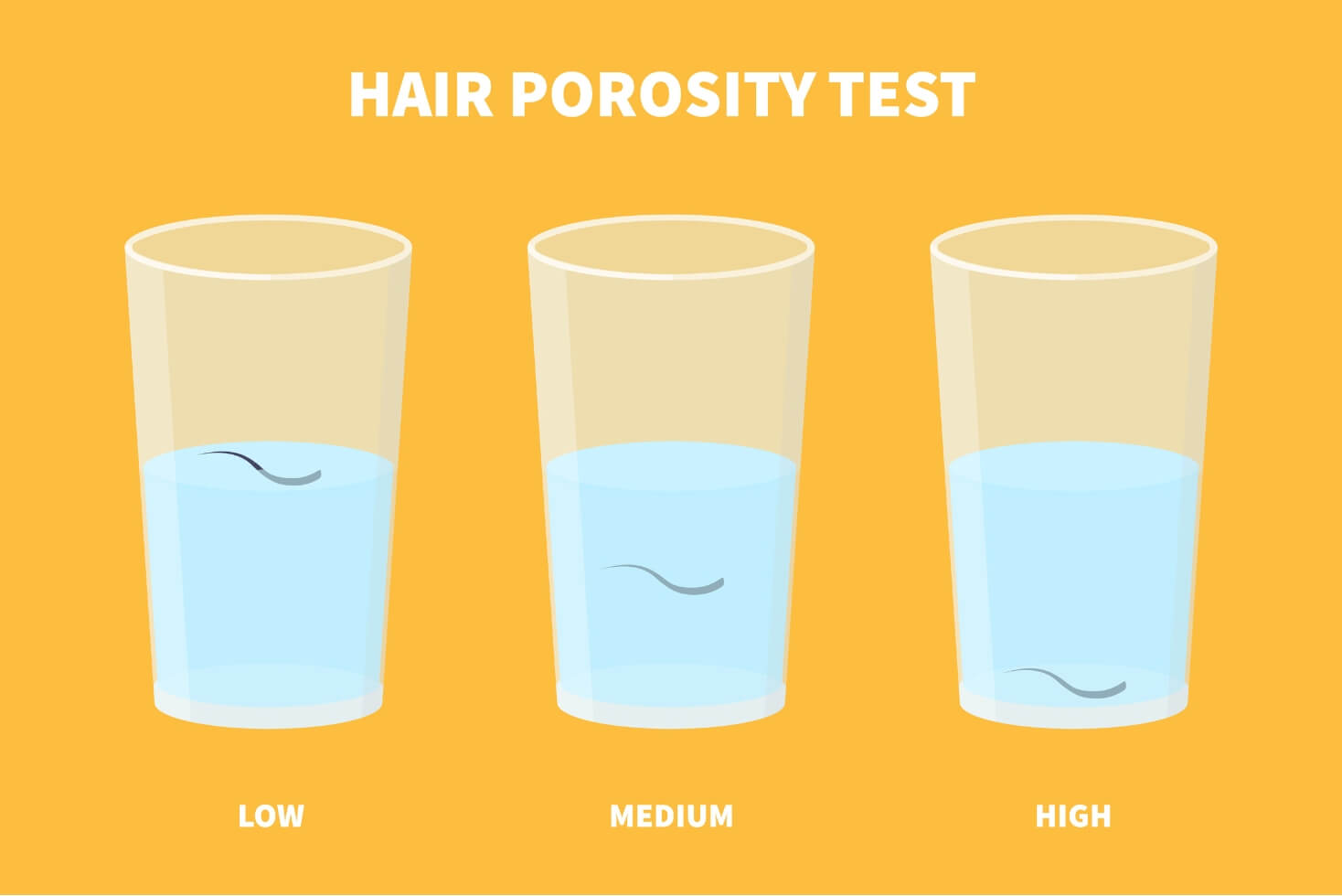
Do you ever feel like your hair just won’t do what you want, no matter how many products you try?
Well, it could be a matter of porosity.
That’s where a hair porosity test comes in!
A hair porosity test can help determine how well your hair absorbs and retains moisture, how long it takes to dry, and the level of damage and elasticity. Not to mention, it can help your stylist choose the best treatments and products for your hair.
So, how do you test your hair’s porosity?
It’s easy! You can try some simple DIY methods at home or leave it to the pros, like your trusty hair stylist, trichologist, cosmetologist.
Lucky for you, our guide has got all the details on the different types of hair porosity tests, with step-by-step instructions on how to perform them and analyze the results.
This guide will help you unlock the secret to perfect hair by determining your hair’s porosity.
So let’s get started.
Hair Porosity Test
A hair porosity test is a procedure to evaluate the porosity level of an individual’s hair.
Hair porosity refers to the amount of space between the cuticles of the hair shaft. It is a characteristic that determines how well the hair can absorb moisture and nutrients from hair products.
Knowing your hair porosity type is important because it can affect how you style and care for your locks.
A porosity level classification method categorizes the hair based on its ability to ingest and retain moisture.
There are three main levels of hair porosity:
- Low Porosity
- Hair with a tightly bound cuticle layer that makes it difficult for moisture to penetrate the hair shaft. Low porosity hair tends to repel water and products, but it retains moisture well once moisturized.
- Medium Porosity
- Hair with a slightly open cuticle layer that allows a moderate amount of moisture to penetrate the hair shaft. This type of hair, also known as normal porosity hair, is generally healthy, easy to maintain, and responds well to most hair care products and treatments.
- High Porosity
- Hair with a damaged or open cuticle layer that allows for excessive moisture to penetrate the hair shaft and makes it difficult for the hair to retain the moisture. High porosity hair is often frizzy, dry, and brittle and can result from damage to the hair cuticle layer due to excessive heat styling, bleaching, and other chemical processes.
A hair porosity test can help determine the following:
- The hair’s ability to absorb and retain moisture.
- The condition of the hair’s cuticle structure.
- Porosity level classification (low, medium, or high).
- The strength and elasticity of the hair.
- Determine the best products to use.
- How often to wash the hair.
- The density of the hair.
- The hair’s moisture to protein ratio.
- The appropriate haircare routine required.
After conducting a porosity test, the hair’s behavior is observed and analyzed to classify it as low, medium, or high porosity. Based on the results, a customized haircare routine can be developed, which may include specific hair care products and treatments to help maintain the hair’s moisture-protein balance.
How to Test Hair Porosity (Different Methods Explained)
Here are all the various methods for performing a hair porosity test. Some can be done at home, and some require the help of a haircare professional, which includes more specialized tools and devices that can analyze the hair fiber at a microscopic level.
- Float Test
- Slip n Slide test
- Wet Stretch test
- Dry test
- Watershed Test
- Strand Burn test
- Porosity Meter Test
- Fiber Swelling Test
- Dynamic Vapor Sorption Test
- Gas Adsorption and Pore Size Analysis Test
Below, I have detailed each test method, with step-by-step instructions and details on how to interpret the results correctly.
But before you start, do this:
Wash Your Hair with a Clarifying Shampoo First
Wash your hair with a clarifying shampoo to ensure it’s clean and free from product build up. Otherwise, buildup and residues can interfere and skew the test result. In other words, you won’t get a true representation of your hair’s porosity level.
You do not want any external factors to influence the result.
If you have hard water, consider using a hard water clarifying shampoo.
Here’s a list of clarifying shampoos we recommend.

Once your hair is clarified, proceed with testing.
DIY Hair Porosity Tests You Can Do At Home
The Float Test
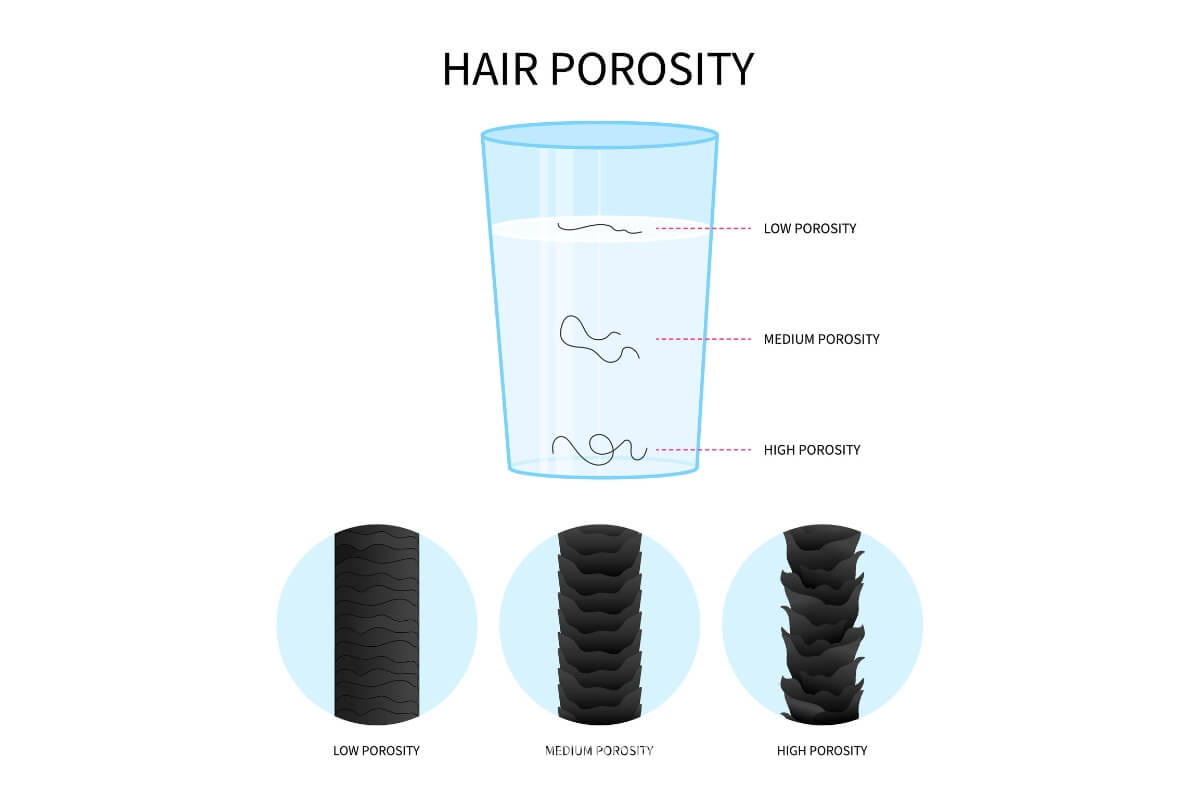
The float test, also known as the water test, is a simple and effective method for determining hair porosity by checking if a piece of hair floats or sinks in a glass of water.
Here is a step-by-step guide on how to perform the float test and use the results to personalize your hair care routine:
- Select a clean and dry strand of hair from your head.
- Fill a glass or bowl with water at room temperature. Make sure that the water is not too hot or too cold.
- Carefully submerge the hair strand in the water, completely covering it.
- Use a timer to track how long the hair sinks or floats.
- Observe the hair’s behavior for several minutes.
Analyzing The Results:
- If the hair strand sinks quickly, it may indicate high porosity.
- If it floats for a while before sinking, it may indicate medium porosity.
- If it remains floating on the surface, it may indicate low porosity.
The Slip ‘n’ Slide Test
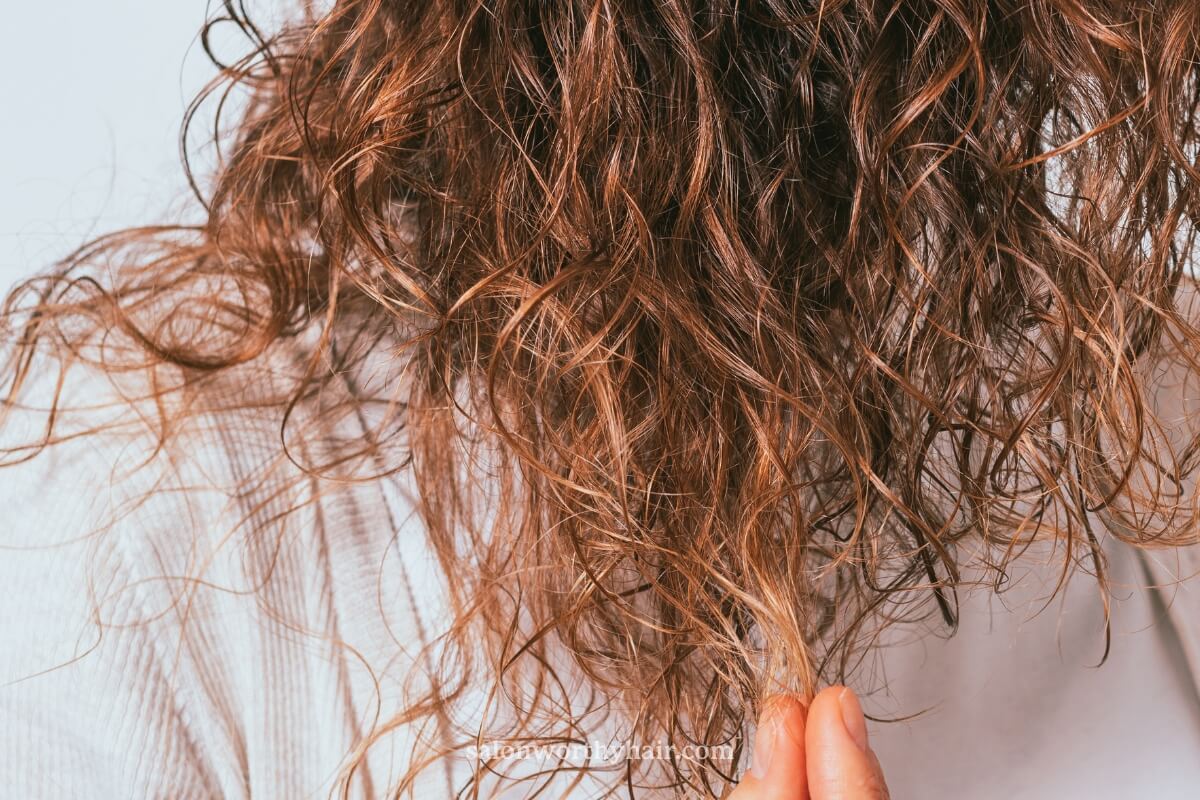
The slip n slide test involves sliding a strand of hair between your fingers to feel for any bumps or roughness, which can indicate high porosity.
Here’s a step-by-step guide to performing the slip n slide test:
- Select a hair strand from your head.
- Hold the hair between your thumb and index finger about 2 inches away from the scalp.
- Slide your fingers down the hair strand towards the ends, feeling for any bumps or roughness as you go.
Analyzing The Results:
- If you feel bumps or roughness, it may indicate high porosity. This means that the hair cuticles are open, and the hair is likely to lose moisture quickly.
- If the hair feels smooth and silky, it may indicate low porosity.
- Hair feels dry and brittle: If the hair feels dry and brittle, it may indicate a lack of moisture. A deep conditioning treatment can help.
The Wet Stretch Test

The wet stretch test determines the hair porosity by evaluating the amount of stretch and the time it takes for the hair to return to its original length when it’s wet.
Here is the step-by-step guide on how to do a wet stretch hair porosity test:
What you’ll need:
- Spray bottle filled with water
- Clean hair strand(s)
Procedure:
- Spray the hair strand(s) with water until they are saturated.
- Gently pull the hair strand(s) from both ends and stretch it as much as possible.
- Observe the amount of stretch and the time it takes for the hair to return to its original length.
Analyzing The Results:
- High Porosity: If the hair stretches and returns to its original length quickly, it is highly porous.
- Normal Porosity: If the hair takes a few seconds to return to its original length, it is considered normal porosity.
- Low Porosity: If the hair takes an extended period to return to its original length, it is low porosity.
The Dry Test
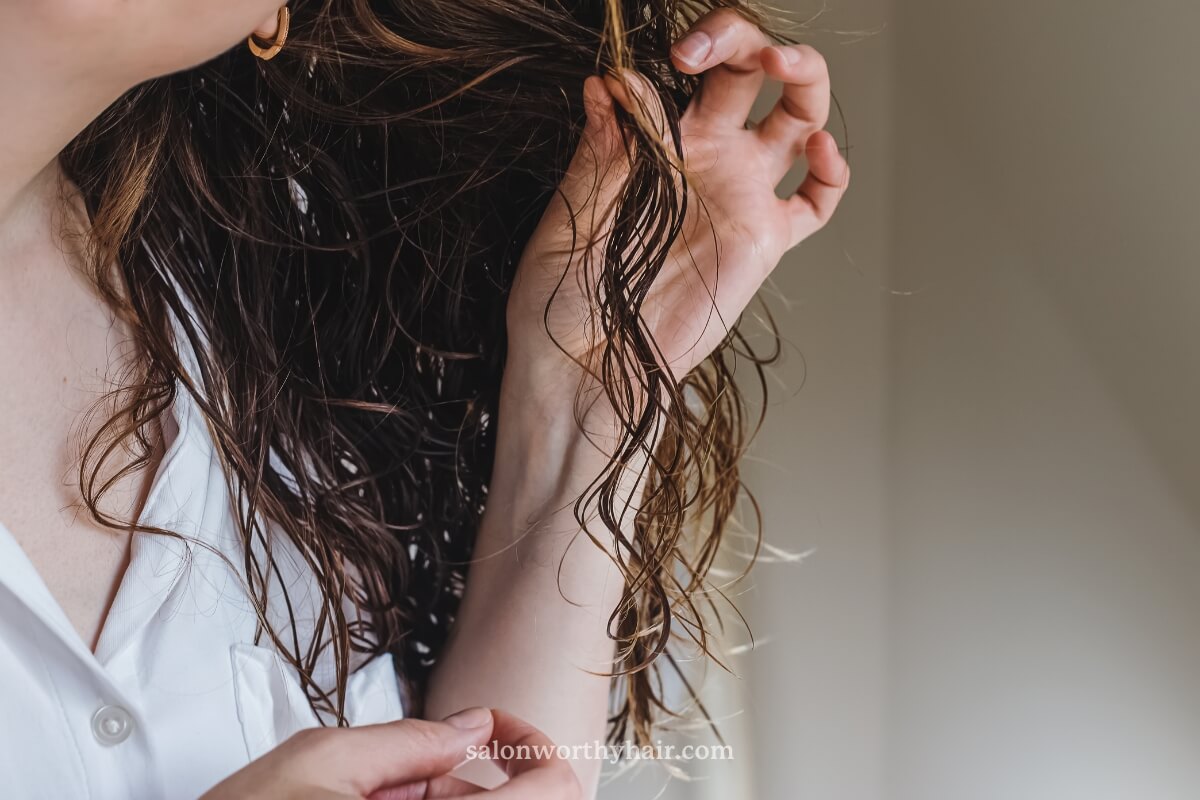
The dry hair porosity test is a method to determine hair porosity level by examining the rate of moisture loss from the hair strand, which can be compared to the rate of moisture loss from the skin.
The test involves comparing the drying time of hair and skin but is not solely focused on how fast the hair dries compared to the skin. The test is more specifically concerned with the rate of moisture loss from the hair strand.
Procedure:
- Start by washing your hair with your regular shampoo and rinse it thoroughly.
- Do not dry it out.
- Do not use any other hair product after washing your hair.
- Wet a small area of your skin, such as your arm, and do not dry it. This will help you compare the moisture loss rate between your skin and hair.
- Observe which dries out first, your hair or your skin.
Analyzing The Results:
- If the hair dries out before your skin, it means the hair has high porosity, meaning the hair absorbs water and other substances quickly but also loses moisture quickly, leading to dryness and damage.
- If the skin dries out before the hair, then the hair is low porosity. This indicates that the hair has a tight cuticle layer that prevents moisture from penetrating.
- Repeat steps 1-5 with several strands of hair from different areas of your head to get an overall idea of your hair’s porosity.
The Watershed Test
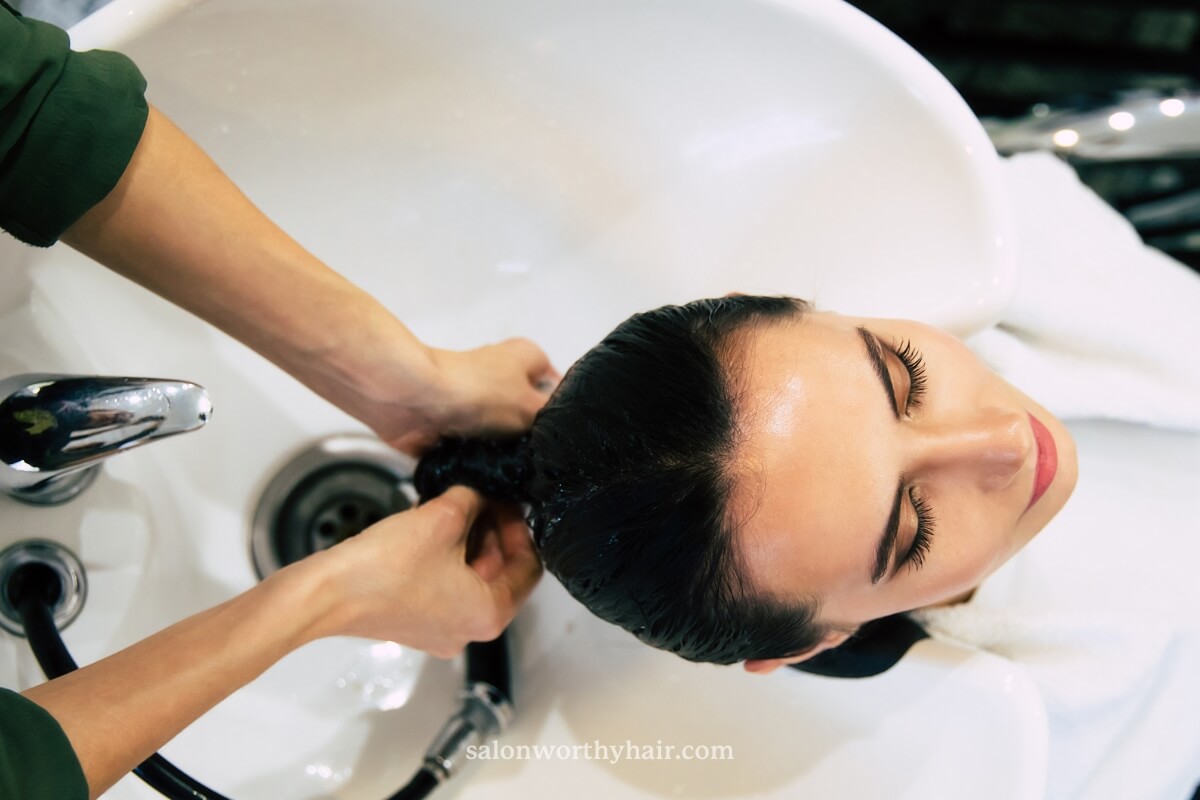
The watershed hair porosity test involves running a small section of hair under a stream of water and observing how the water behaves when it comes into contact with the hair strand. Highly porous hair will allow the water to pass through quickly, while low porous hair will resist the water, causing it to bead up and roll off the strand.
Procedure:
- Wet your hair and gently squeeze out any excess water. This will ensure that your hair is damp enough to conduct the test but not too wet that the water doesn’t behave properly on the hair strands.
- Hold a small section of hair under a stream of water, either from a showerhead or faucet. Observe how the water interacts with the hair.
Analyzing The Results:
- If the water runs off the hair without being absorbed, the hair is likely to have low porosity. This means the hair has a tight cuticle layer that prevents moisture from penetrating the hair strand.
- If the hair quickly absorbs the water, the hair is likely to have high porosity. This means that the hair quickly absorbs water and other substances but also loses moisture quickly, leading to dryness and damage.
Repeat the test with several sections of hair from different areas of your head to get an overall idea of your hair’s porosity.
If you prefer to get your hair assessment done by a professional, here are a few types of tests that you can expect.
Hair Porosity Tests Done by Professionals
The Strand Burn Test
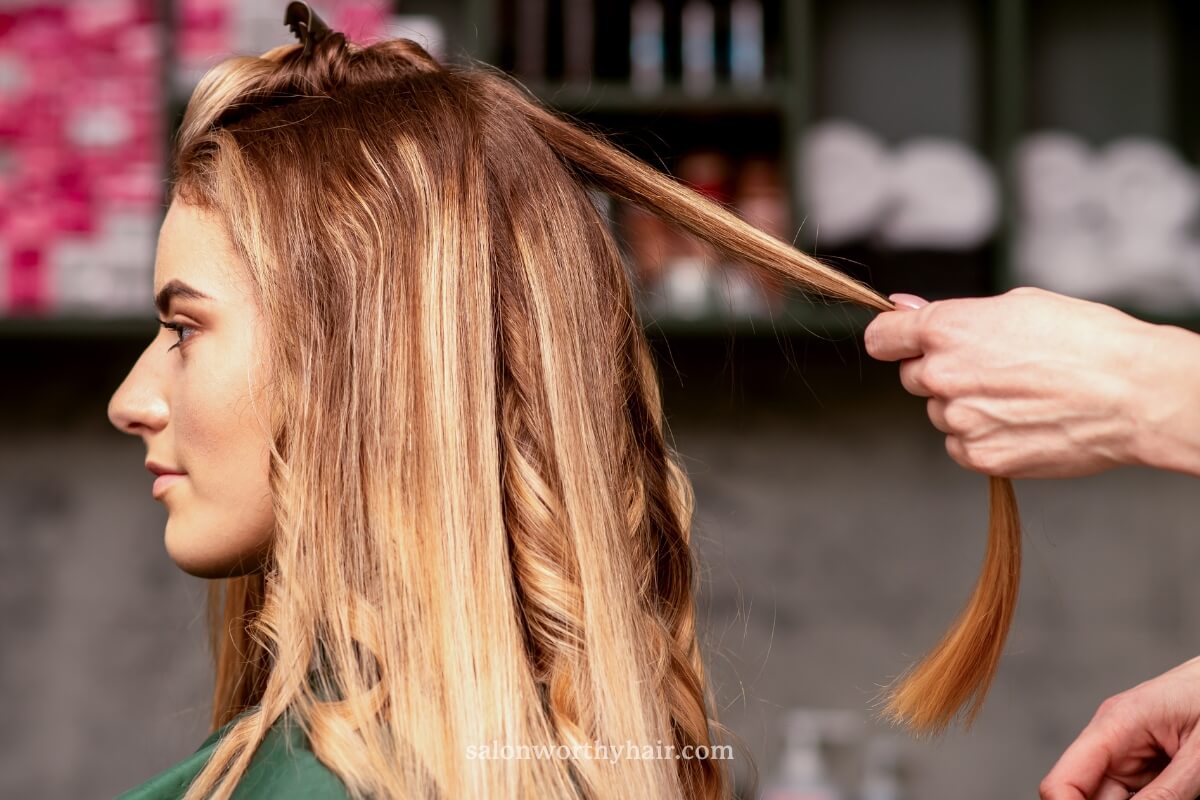
The strand burn test for hair porosity is a method that observes how quickly the hair burns, the smell of the smoke, and how the hair behaves as it burns. This test is typically done by hair professionals and is not recommended for home use.
Procedure:
To perform the strand burn test, a small section of hair is taken and burned with a match or lighter. The hair is then observed as it burns.
Analyzing The Results:
- Highly porous hair will burn quickly and easily, produce a strong and pungent odor, and may even melt or liquefy as it burns. This is because highly porous hair absorbs water and other substances quickly, making it easier to burn.
- Low porous hair will burn slowly and may be difficult to ignite, produce a light and faint odor, and may not melt or liquefy as it burns. This is because low porous hair has a tight cuticle layer preventing moisture from penetrating the strand.
While the strand burn test can provide valuable information about hair porosity, it is not recommended for home use as it can be dangerous and can also cause damage to the hair. It’s best to consult with a hair professional or use one of the other more common hair porosity tests, such as the floating or slip-n-slide tests, to determine your hair’s porosity.
The Porosity Meter Test
A porosity meter test for hair is performed by using a small handheld device that measures the ability of hair to absorb and retain moisture.
The porosity meter test device measures the hair’s electrical resistance, which indicates the hair’s ability to absorb and retain moisture.
Procedure:
To perform the test, a small section of hair is inserted into the porosity meter, and the device is turned on. The device will then measure the electrical resistance of the hair and display the results on a screen. The results can then be used to determine the hair’s porosity level.
Analyzing The Results:
- Highly porous hair will have a lower resistance, indicating that it is more conductive and can absorb moisture easily.
- Low porous hair will have a higher resistance, indicating that it is less conductive and does not absorb moisture easily.
Porosity meters for hair are specialized devices that hair professionals, such as cosmetologists or trichologists typically use.
The Fiber Swelling Test
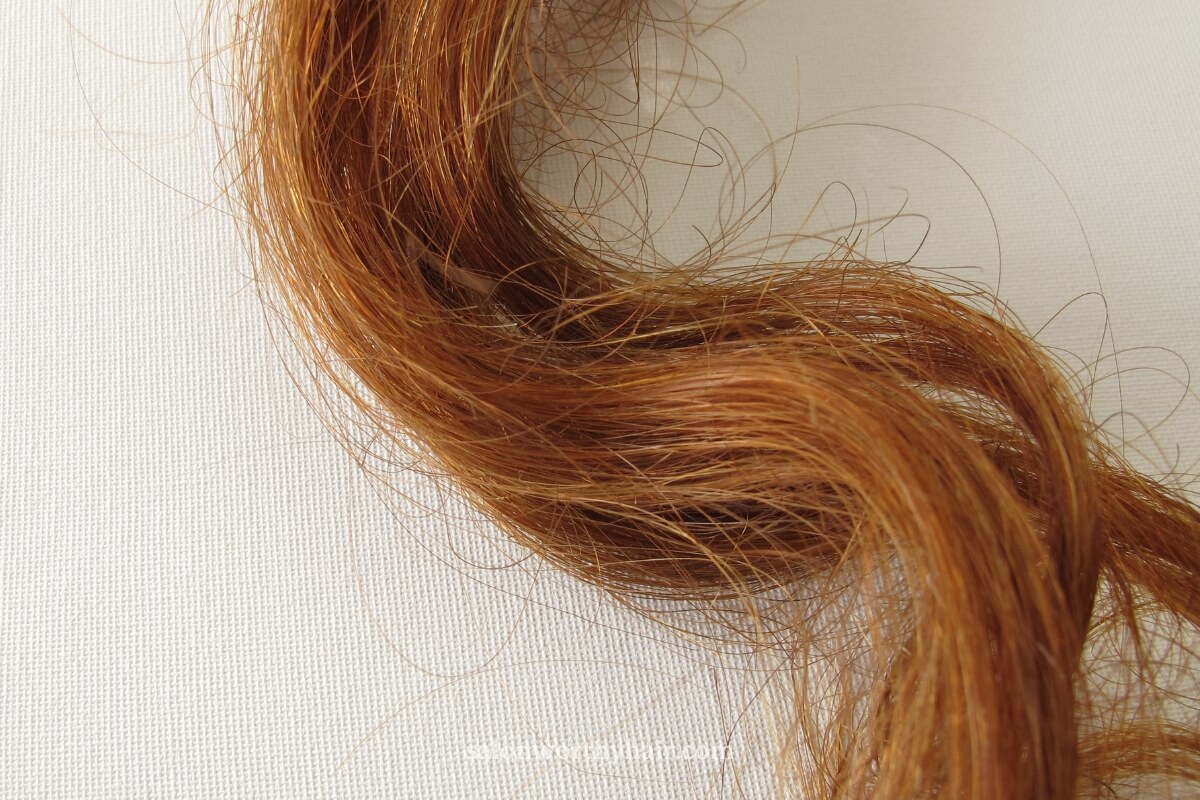
The fiber swelling porosity test is based on the principle that hair strands with high porosity will absorb more water and other substances than hair strands with low porosity.
Here’s how the test is done:
A small section of hair is weighed to determine its dry weight. The hair is then submerged in water or another liquid for a set period of time, typically 30 minutes to an hour. After the designated time has passed, the hair is removed from the liquid, blotted with a towel to remove excess moisture, and weighed again to determine its wet weight.
The difference between the dry weight and wet weight of the hair is an indication of how much the hair has swelled and can be used to determine the hair’s porosity.
Analyzing The Results:
Highly porous hair will absorb more water and other substances, leading to a greater increase in weight when wet.
On the other hand, low porosity hair will absorb less water and other substances, leading to a smaller increase in weight when wet.
The fiber swelling test is a more complex and time-consuming test than the simple DIY tests, but they can provide more accurate results. A hair professional must perform this test, and is not recommended for home use.
The Dynamic Vapor Sorption (DVS) Test
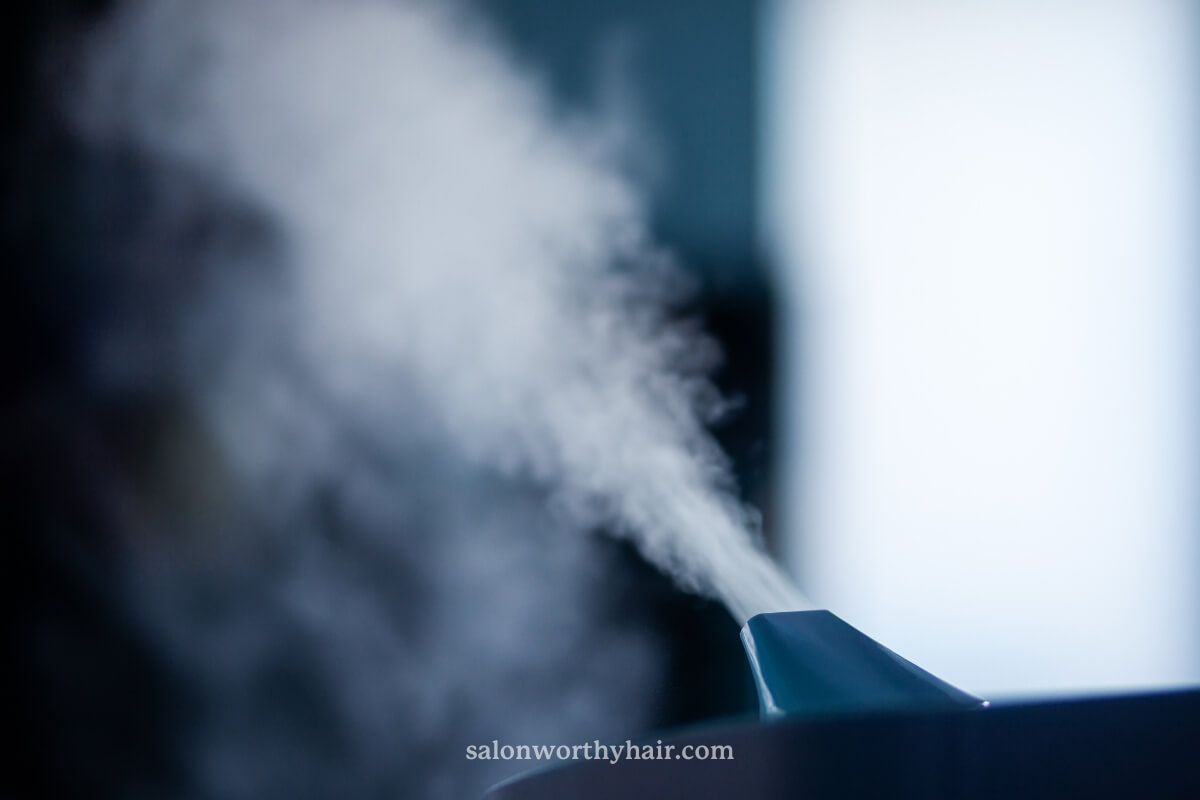
The dynamic vapor sorption (DVS) test is a scientific method for measuring hair porosity. It involves exposing a small section of hair to different humidity levels and observing its response. This test uses the gravimetric technique, which measures the time and amount of solvent absorbed by the hair sample.
Procedure:
To perform the test, a small section of hair is placed in a controlled environment with varying humidity levels. The hair is then exposed to these humidity levels for a specific duration, typically for several hours or overnight. Afterward, the hair is removed from the environment and weighed to determine the amount of moisture it has absorbed.
The difference in weight between the dry hair and the hair exposed to humidity indicates how much moisture the hair has absorbed.
Results Analysis:
- Highly porous hair will absorb more moisture, resulting in a greater increase in weight.
- Low porosity hair will absorb less moisture, leading to a smaller increase in weight.
The Gas Adsorption and Pore Size Analysis Test
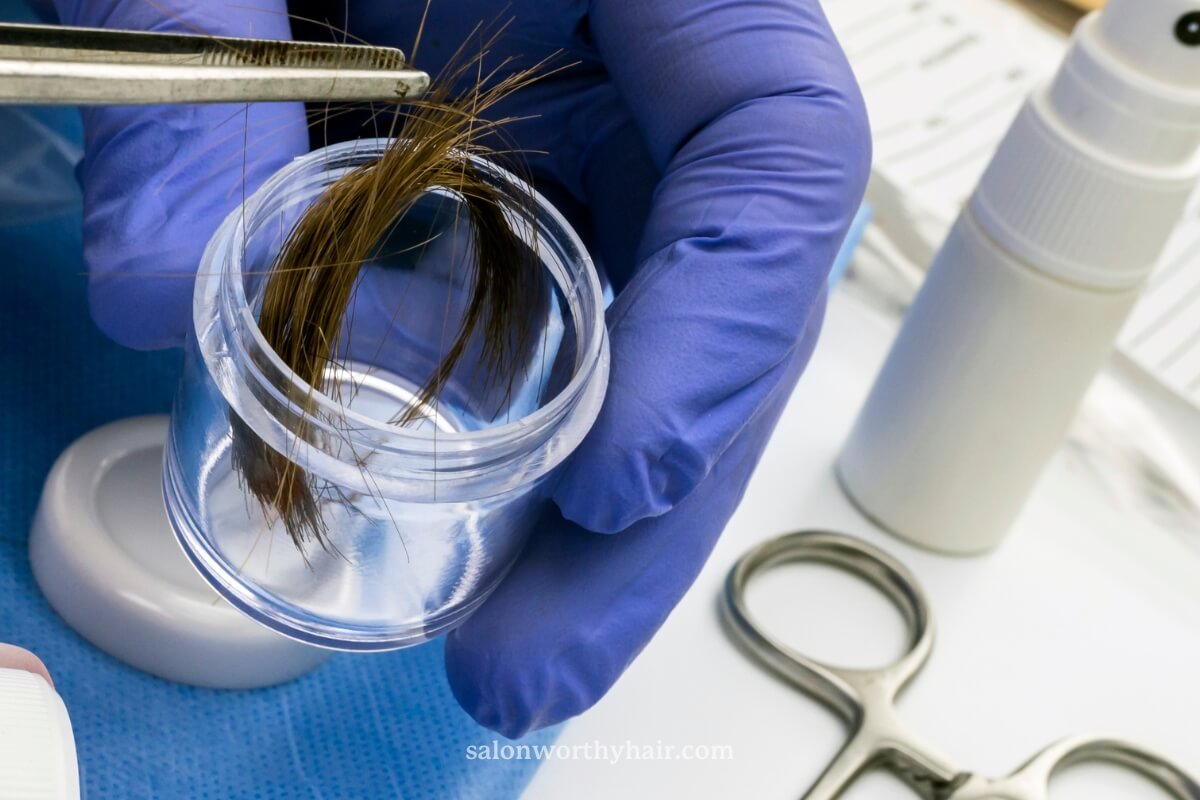
The gas adsorption and pore size analysis method is a technique that involves analyzing the way a gas, typically nitrogen, is absorbed and released by the hair to determine its porosity and the distribution of its pore sizes.
Procedure:
To conduct the gas adsorption test, a small section of hair is first placed inside a chamber that contains a gas adsorption instrument. Then, the hair is exposed to a gas, such as nitrogen, and the instrument measures the amount of gas that is absorbed and released by the hair based on the relative pressure. The data obtained from the amount of gas absorbed and released is used to determine the hair’s porosity and pore size distribution.
Gas adsorption and pore size analysis is a scientifically rigorous method for measuring hair porosity with great accuracy and precision. However, it necessitates specialized equipment and technical expertise, and it is typically performed in a laboratory setting, making it unsuitable for home use. The method is particularly useful for researchers seeking to study hair properties in-depth or for companies developing hair care products designed to cater to various hair types.
What Does Your Hair Porosity Tell You?
Knowing hair porosity is important because it can help individuals determine the best hair care regimen and products for their hair type.
So do your test today and re-evaluate your hair products.
About the Author
 Tina Moretti
Tina MorettiTina Moretti, a passionate hair care enthusiast with over a decade of expertise, dedicates herself to empowering women with proven hair care advice. Recognized for her hands-on experience and trusted guidance, Tina turns every strand into a statement of beauty and confidence.
